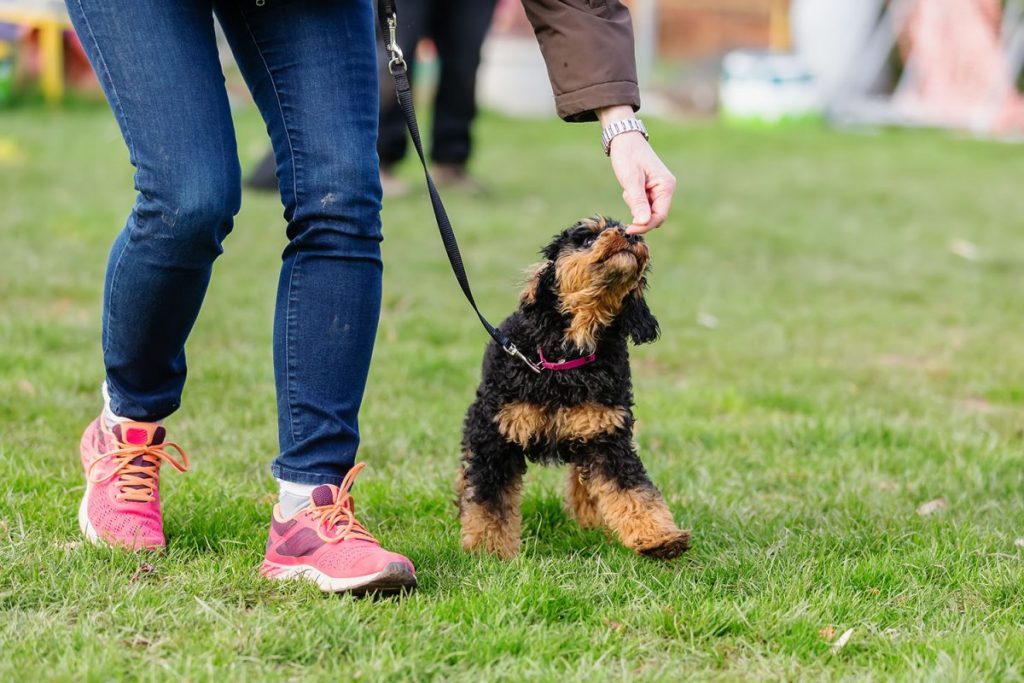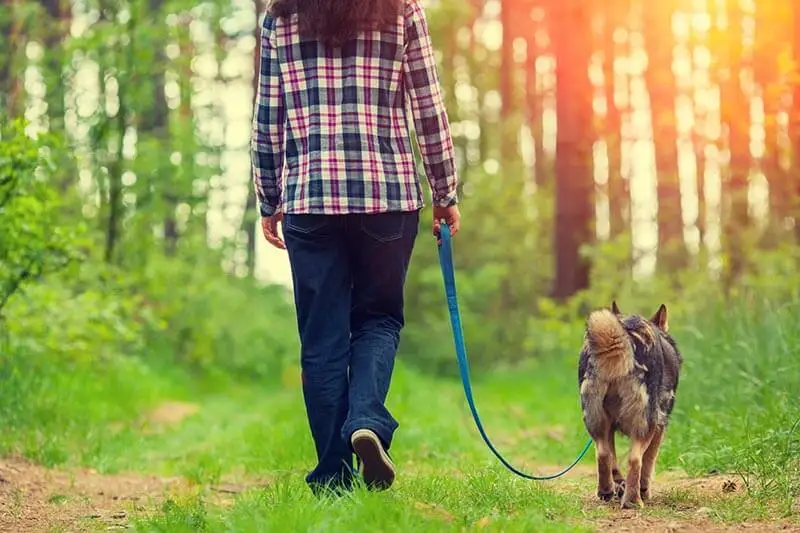Going out for walkies can be the most exciting part of your dog’s day. It’s easy to see why they might start pulling on their leash to get where they want faster. To make sure you’re safe from being pulled over, it’s important to teach them to walk calmly.
One of the most common reasons dogs pull on their leash is because they’ve learned that’s how they get to move forward. Whenever your dog pulls, taking just one step with them gives a clear signal that pulling works.
Teaching your dog to walk with a loose leash takes a great deal of patience and time. But it’ll be well worth it when you’re out on a lovely, calm stroll with your best pal.
A quick Internet search will show you equipment that promises to ‘cure’ pulling. Some equipment causes pain or discomfort when the dog pulls by putting tension in a sensitive area. This is unnecessary and can be unpleasant and confusing for them.
Walk your dog using whatever piece of equipment is most comfortable for them (such as a flat harness or collar). If using a harness, introduce it in a gentle, fun way.
Teach your dog that being near you pays off.
Starting in your home or garden where it’s calmer, reward your dog for sitting or standing by your side. It’s much easier for your dog to learn new behaviors in quiet places where they won’t be easily distracted. Practice without their leash to begin with, and then introduce it once your dog is reliably following you.
You may need to hold some tasty treats or a toy to get your dog by your side to start with. You’ll need to do this less over time but remember to always praise them when they stick close to you.


If you’re not able to be 100% consistent (e.g. if you’re running late but you still need to pop out with your pooch), it can make things easier to have two different harnesses.
You can use one harness when you don’t have time for training, to give your dog ‘permission to pull’ while they’re wearing it. And use a different harness, or attach the leash to your dog’s collar, for training sessions, and everyday walks once they no longer pull.
Your dog will learn the difference between the two and that they can pull on one but not the other. But be aware, that it’s likely to take your dog longer to learn to stop pulling with this method.
Se hai trovato utile questa pagina, considerala lasciando una piccola donazione per aiutarci a creare consigli più utili.
Puoi anche iscriviti alla nostra newsletter gratuita per ulteriori suggerimenti e trucchi e per rimanere aggiornato sul nostro lavoro.
| Biscotto | Durata | Descrizione |
|---|---|---|
| cookielawinfo-checkbox-analytics | 11 mesi | This cookie is set by GDPR Cookie Consent plugin. The cookie is used to store the user consent for the cookies in the category "Analytics". |
| cookielawinfo-checkbox-funzionale | 11 mesi | The cookie is set by GDPR cookie consent to record the user consent for the cookies in the category "Functional". |
| cookielawinfo-checkbox-necessario | 11 mesi | This cookie is set by GDPR Cookie Consent plugin. The cookies is used to store the user consent for the cookies in the category "Necessary". |
| cookielawinfo-checkbox-altri | 11 mesi | This cookie is set by GDPR Cookie Consent plugin. The cookie is used to store the user consent for the cookies in the category "Other. |
| cookielawinfo-checkbox-performance | 11 mesi | This cookie is set by GDPR Cookie Consent plugin. The cookie is used to store the user consent for the cookies in the category "Performance". |
| visti_cookie_policy | 11 mesi | Il cookie viene impostato dal plug-in GDPR Cookie Consent e viene utilizzato per memorizzare se l'utente ha acconsentito o meno all'uso dei cookie. Non memorizza alcun dato personale. |